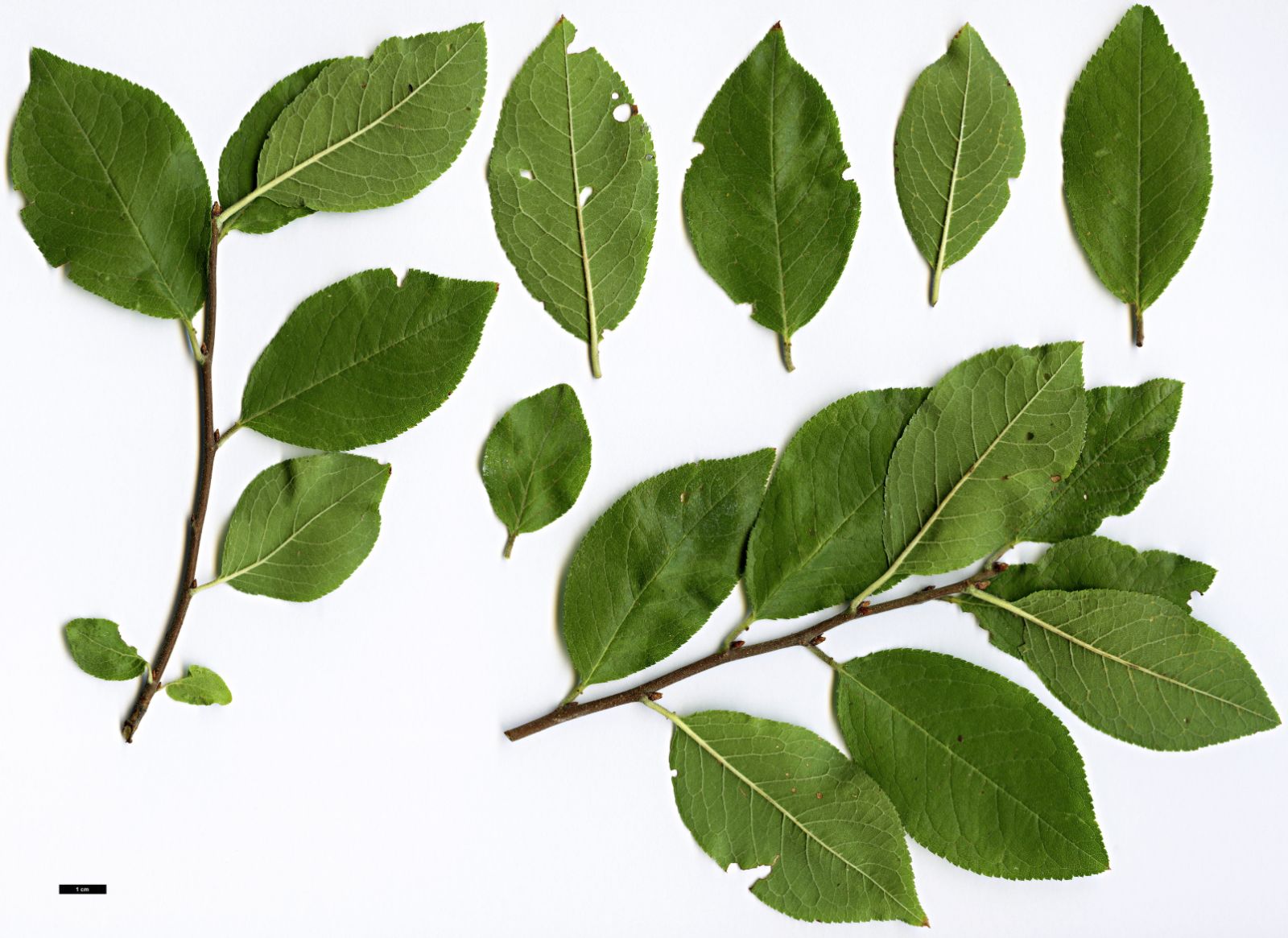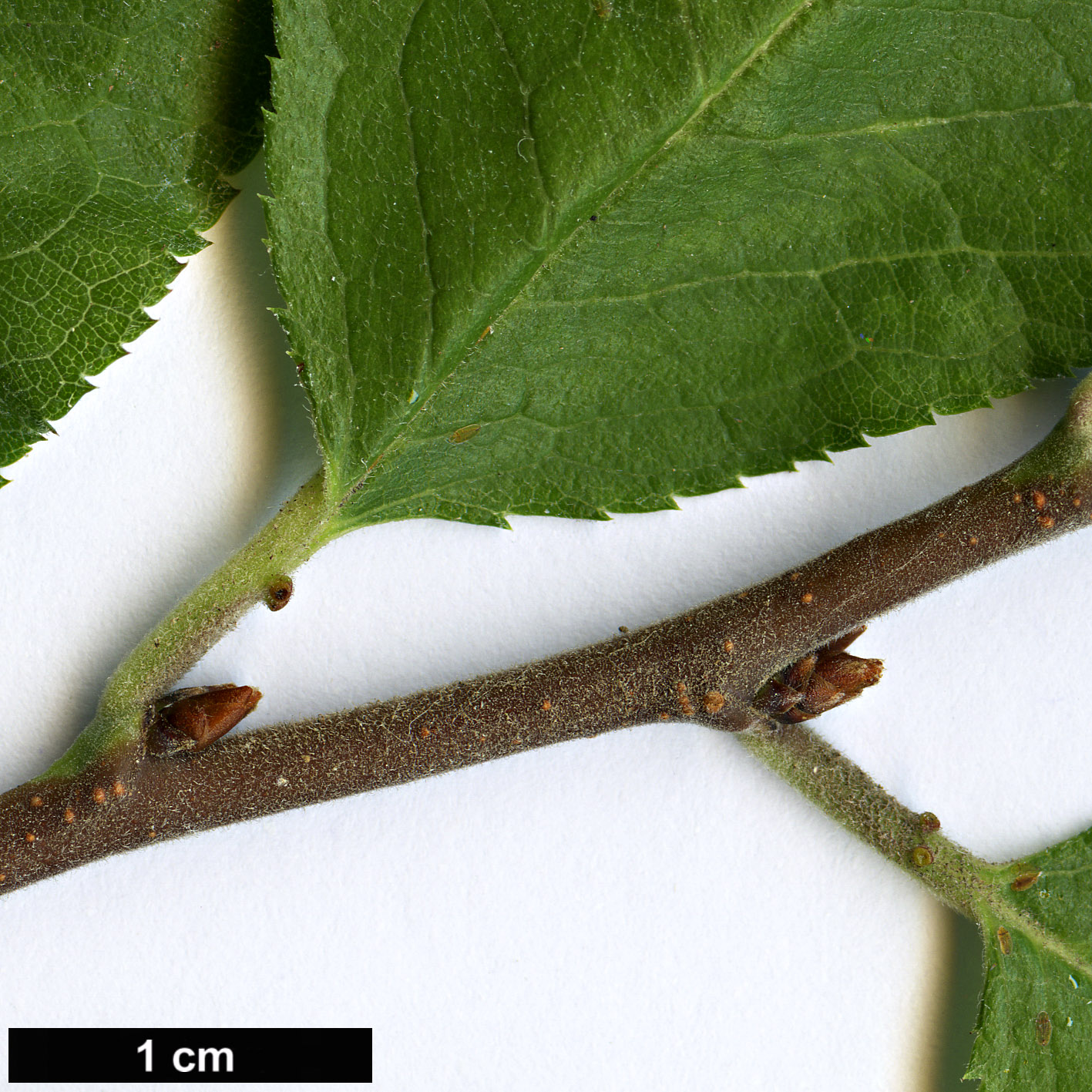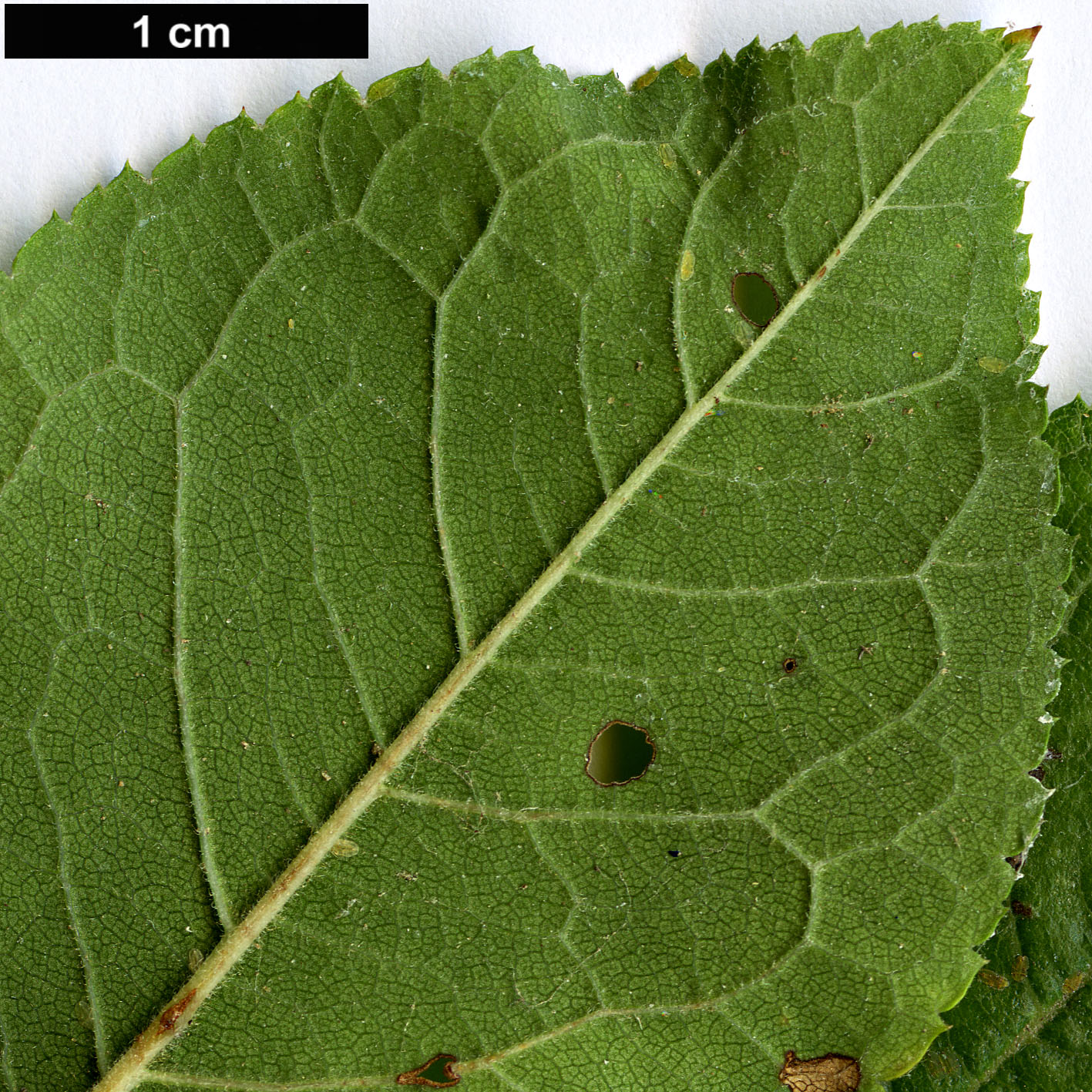Prunus maritima
Credits
Article from Bean's Trees and Shrubs Hardy in the British Isles
Recommended citation
'Prunus maritima' from the website Trees and Shrubs Online (treesandshrubsonline.
Genus
Common Names
- Sand Plum
- Beach Plum
Other taxa in genus
- Prunus alleghaniensis
- Prunus americana
- Prunus × amygdalo-persica
- Prunus amygdalus
- Prunus angustifolia
- Prunus apetala
- Prunus arabica
- Prunus argentea
- Prunus armeniaca
- Prunus avium
- Prunus besseyi
- Prunus brigantina
- Prunus campanulata
- Prunus canescens
- Prunus cantabrigiensis
- Prunus cerasifera
- Prunus cerasus
- Prunus cocomilia
- Prunus concinna
- Prunus conradinae
- Prunus consociiflora
- Prunus cornuta
- Prunus cuthbertii
- Prunus dasycarpa
- Prunus davidiana
- Prunus × dawyckensis
- Prunus dielsiana
- Prunus domestica
- Prunus dulcis
- Prunus emarginata
- Prunus × fontanesiana
- Prunus fruticosa
- Prunus glandulosa
- Prunus grayana
- Prunus himalaica
- Prunus hortulana
- Prunus humilis
- Prunus ilicifolia
- Prunus incana
- Prunus incisa
- Prunus jacquemontii
- Prunus kansuensis
- Prunus lannesiana
- Prunus laurocerasus
- Prunus litigiosa
- Prunus lusitanica
- Prunus maackii
- Prunus mahaleb
- Prunus maximowiczii
- Prunus microcarpa
- Prunus mira
- Prunus mugus
- Prunus mume
- Prunus nigra
- Prunus nipponica
- Prunus orthosepala
- Prunus padus
- Prunus pensylvanica
- Prunus persica
- Prunus pilosiuscula
- Prunus prostrata
- Prunus pumila
- Prunus rufa
- Prunus salicina
- Prunus sargentii
- Prunus serotina
- Prunus serrula
- Prunus serrulata
- Prunus sibirica
- Prunus × sieboldii
- Prunus simonii
- Prunus sogdiana
- Prunus speciosa
- Prunus spinosa
- Prunus ssiori
- Prunus subcordata
- Prunus subhirtella
- Prunus takesimensis
- Prunus tangutica
- Prunus tenella
- Prunus tomentosa
- Prunus triloba
- Prunus virginiana
- Prunus × yedoensis
A deciduous shrub of low, compact habit 4 to 8 ft high and more in diameter, with grey, downy young branchlets, becoming dark with age. Leaves oval or obovate, 11⁄2 to 3 in. long, 3⁄4 to 11⁄4 in. wide, saw-toothed, covered beneath when young with down, which becomes reduced to the midrib and veins towards the end of the season; leaf-stalk 1⁄3 in. long, downy. Flowers white, 1⁄2 in. across, produced in May usually in pairs or in threes at each bud on last year’s shoots; on the short side spurs the flowers appear to be in clusters, owing to the crowded buds; flower-stalks 1⁄3 in. long, downy. Calyx downy, funnel-shaped, with five rounded, oblong lobes. Fruits red or purple, round or oblong, 1⁄2 to 1 in. in diameter. A yellow-fruited variety is also cultivated. Bot. Mag., t. 8289.
Native of the eastern United States, frequently inhabiting sandy or gravelly places near the coast. Its fruits are gathered for preserving there, but they appear to vary in quality and sweetness. The flowers are borne profusely in this country, and the species is one of the most attractive of dwarf plums. Judging by its hardy, robust constitution, and by its natural habitats, it ought to succeed in exposed maritime localities in Britain.
Some orchard varieties of this species are cultivated in the USA.



